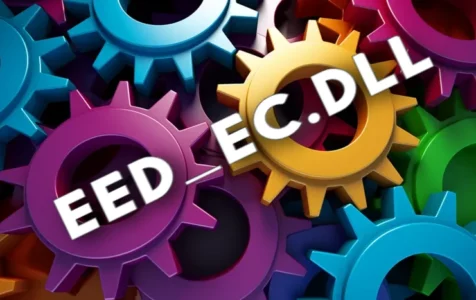Eed_ec.dll is a dynamic link library (DLL) file associated with the Samsung Easy Eco Driver, which is software designed to minimize the environmental impact of printing by reducing ink and toner usage. Developed by Samsung Electronics, this driver facilitates the automatic removal or modification of images and intensive sections of a document during printing to conserve resources. Users can also save their preferred settings as presets within the program.
When engaged with document printing, users might come across a feature known as Easy Eco Driver, which can be accessed via the “Favourites” tab in the Printing Preferences window. The basis for the functionality of Easy Eco Driver and similar programs or browser extensions is partly due to DLL files. They contain code, data, and resources necessary for smooth operation. The eed_ec.dll file, specifically, is a core module of the Samsung Easy Eco Driver.
The presence of the eed_ec.dll file in your system, particularly within the C:\Windows\System32 directory, could, however, sometimes give rise to errors, especially during certain updates or instances of compatibility issues.
Is It Safe to Run Eed_ec.dll? Can It Be a Virus or Malware?
Although eed_ec.dll is not a critical Windows file and could potentially be disabled without affecting the operating system’s functionality, it is generally safe as it is a legitimate component of the Samsung printer software. Nevertheless, just like any file on your computer, it is susceptible to becoming corrupted or replaced, such as when the system undergoes an update. If there’s a suspicion that it could be malware, the safety measure to take is to check the location and the verified signer in Task Manager. A legitimate file will be properly signed by its creator, while a file without such verification or located outside its usual directory could indeed be malicious.
Expert Tip: For smoother PC performance, consider using a PC optimization tool. It handles junk files, incorrect settings, and harmful apps. Make sure it's right for your system, and always check the EULA and Privacy Policy.
Special offer. About Outbyte, uninstall instructions, EULA, Privacy Policy.
How to Fix Eed_ec.dll Related Issues?
If you encounter issues with eed_ec.dll, such as error messages stating the file is missing or could not be found, there are several troubleshooting steps you can take.
Method 1: Update or Reinstall the Samsung Printer Drivers
Search for your printer model on the Samsung or HP website and download the latest drivers. Then, uninstall the current drivers on your computer and replace them with the ones you’ve downloaded.
Method 2: Remove Eed_ec.dll Using an Autorun Tool
If you’re not using a Samsung printer anymore, removing the eed_ec.dll entry might be necessary. Using a tool like Autoruns, locate and delete any startup entry tied to the DLL file. Be careful to only remove entries related to eed_ec.dll to avoid further system issues.
Method 3: System Restoration or File Checker
In some cases, you may perform a system restore to bring back the missing DLL files or use System File Checker to repair corrupted DLL files on your Windows system.
If these measures don’t resolve the issue, the DLL file might indeed be missing or corrupted. You could potentially restore the DLL file from a backup or by copying it from another location where it is known to be good, such as the Windows.old directory following an update.
Community Discussions
Many users have faced eed_ec.dll file missing errors, particularly after a Windows or printer driver update. These discussions often provide insights and additional solutions to the error. You can join forums or communities such as Microsoft Answers or The Windows Club for further assistance and shared user experiences.
Microsoft Community discussion on eed_ec.dll issues
In conclusion, while eed_ec.dll is part of the Samsung Easy Eco Driver and is not inherently malicious, encountering issues with it is not uncommon. Implementing the mentioned solutions can help restore its functionality or appropriately remove it if it’s no longer needed. If you’re unsure whether the file is secure, examine its location and digital signature. For persistent problems, seek guidance from online communities or professional tech support.
